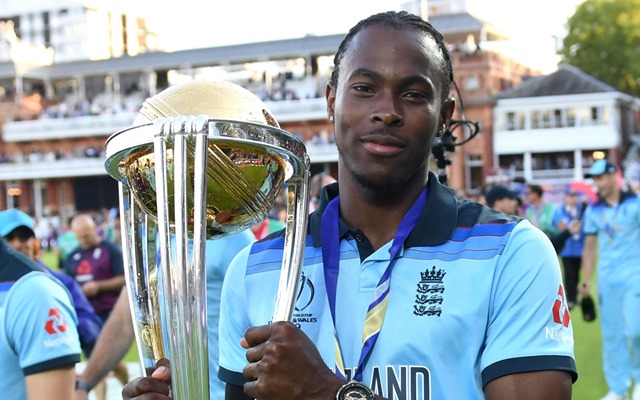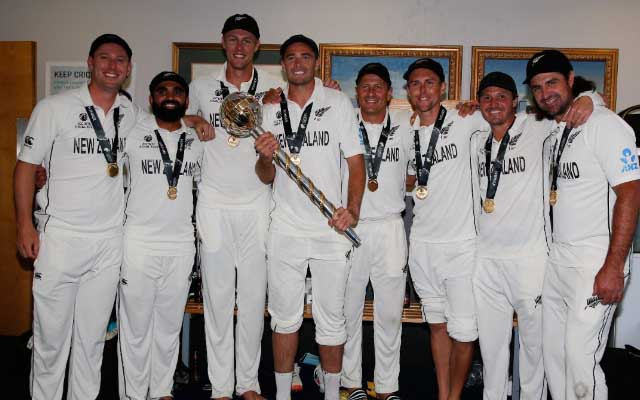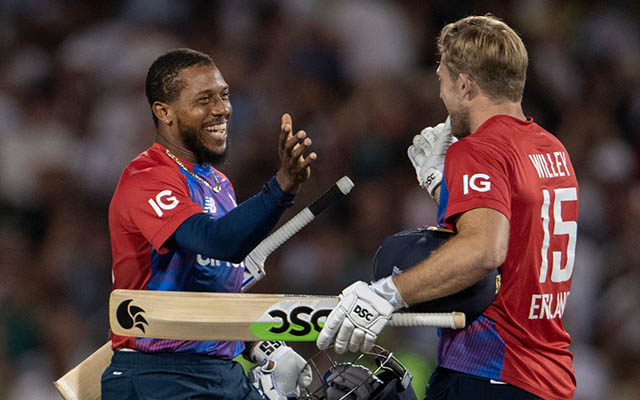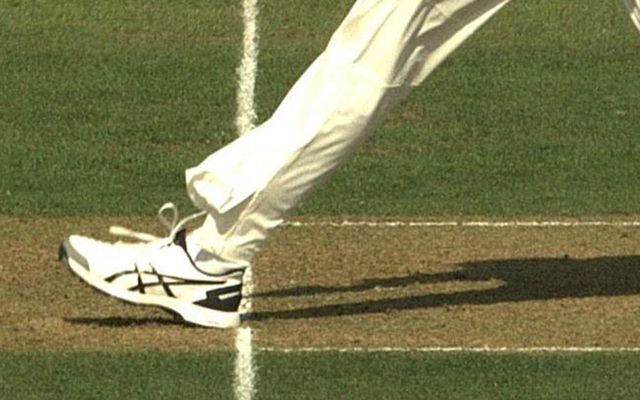5 things that changed in cricket since 2016 T20 World Cup
Here are some of the prominent changes in cricket since the 2016 T20 World Cup.
7 Min Read


Jofra Archer. (Photo by Gareth Copley-ICC/ICC via Getty Images)

Cricket is a sport that rules the imagination of its ardent fans. Add to it the ICC event and that further garners the audacity of their excitement. The fact that after a considerable delay, the T20 World Cup is all set to commence from October 17, the fans are already raring to watch the action unfold.
The mega event was previously staged to be played in India but owing to the uncertainties of the ongoing pandemic, it has been shifted to UAE and Oman. Over the years, one has witnessed that the game of cricket unfolds few changes with time. Whether it is new players chiming in the scenario or a few bidding adieus to the sport, the cricketing fraternity experiences certain tweaks as time passes by.
The last time a T20 World Cup was played was in the year 2016. Now that the cricketing fraternity is at the edge of experiencing another World event in the shortest format, the changes that the sport has unveiled since then strikes one’s mind. Cricket has evolved in varied aspects. From 2016 to 2021 now, the cricket on-lookers have witnessed certain heartbreaking defeats, splendid wins, and a lot more.
Here’s a look at the prominent things that have changed in cricket since the last T20 World Cup:
1. England became the 50-over World Champions

The 2019 World Cup was a tournament that definitely sailed all the spectators through torrents of emotions. Think of a match that had a lot of drama in it and one cannot just miss the 2019 World Cup final between England and New Zealand. The game probably had every ingredient in it to make it a blockbuster hit.
There was suspense, there was a thrill and there was unbelievable cricket. England needed 15 runs in the last over to win and with all the twists and turns the game got tied. A World Cup game, a final, and a Super Over all of these had already brought the viewers to the edge of their seats. In walks Stokes with Jos Buttler and Boult taking the charge of the ball for the Kiwis.
The hosts managed to score 15 runs in the Super Over and the Black Caps who were almost upclose to winning the title a few minutes back needed 16 runs to do so now. England won the super over by a small margin and won their first-ever 50 over World Cup. Though the hosts were declared winners, everybody watching the match was all frenzy as New Zealand too did not deserve to lose. But having said that, it was one of cricket’s greatest games that unfolded the beauty of the sport.
2. New Zealand broke the ICC tournament jinx

When skipper Kane Williamson put arms over Taylor and walked off the ground with a smile on his face, the entire cricketing fraternity probably cherished the moment. Termed as the ‘Nice Guys’ of cricket, New Zealand’s global triumph made the world take notice of them. ‘Nice guys do finish first’ is the phrase that started taking rounds on the internet as New Zealand was finally termed as the World Champions.
Williamson (52*) and Taylor (47*) stood firm on the pitch to help the side chase the target of 139 from 53 overs. India had enough chance to try their luck out but the duo of New Zealand were determined to exude all the resilience on the field. Test cricket is rightly considered as the parent format of the game. And a contest that would decide the champions of this format definitely has to have all the aspects that make it a special one.
The rain did play its part in the World Test Championship final but the Kiwis eventually found a way to dominate the proceedings against the Virat Kohli-led side. Two years back the team had to face a heartbreaking defeat on English soil but they returned to emerge triumphantly and be crowned as the first-ever world Test champions.
3. Cricket faced fan-crisis

With the pandemic, initially, live sports had to be paused. The fans were yearning to watch some live-action unfold but the Covid-19 circumstances made things challenging. Even as cricket made its comeback, in the beginning, fans weren’t allowed to enter the stadiums. The spectators are the heartbeat of the sport.
The ardent fans cheering their heart out for their loved teams exude the passion they have for the sport. The fans wearing their team’s jerseys, painting their faces, carrying the flags, and roaring for the teams add much more flavor to the action that takes place in the middle of the ground. But owing to the ongoing pandemic, cricket had to stay away from its followers for a while.
There is an altogether different vibe and the environment when the fans gather to support their teams in the stadiums. There is electrifying energy and vibrancy that the on-lookers produce also encourages the players to give it their all. However, fans have now been allowed in limited numbers to witness the matches but for the longest of time, they weren’t able to do so.
4. The importance given to the batting of tail-enders

As time passes, the demand for the game also changes. Adapting to the challenges and making the most of one’s abilities is what the players have been aiming to do. Previously, lower-order batting wasn’t considered a prominent thing but now the importance of their wicket is far more than one had ever imagined.
It is been witnessed over the years now that the teams are paying a lot of attention to batting deep in any game. The significance of having tail-enders that can chip in crucial runs plays a vital role in strengthening a team’s position. The strong batting at the top provides the team with flying starts but at times when there is a batting collapse, the teams rely on their tail-enders to take the team past the total or put a respectable total on board.
The ability of the batters down the order to contribute pivotal runs also allows the top order to dominate the proceedings. Especially in the T20 format, the number seven or eight batters coming to the fore and hitting some big sixes is not an unusual scenario these days.
5. No ball decision taken by Third Umpire

Sometimes it is a matter of just a single run that decides the outcome of the game. In such a scenario, a no-ball can vastly affect the result of the game. For the batting side, it can come as a sigh of relief or a ray of hope. As it is often just one big hit a batter needs to get his momentum.
It is likely that the on-field umpire might sometimes miss out on giving a no-ball. This eventually affects the standard of the game and to avoid that the decision to allow the Third Umpire to make the decision of the no-ball is a fair idea that has been brought to the fore. Making the most of the advancements of the technology would only help the sport to be played within the frame of the rules.
Once the TV umpire tracks a no-ball, the on-field umpire is signaled about the same with the help of a buzzer and then he/she signals the no-ball.
Download Our App